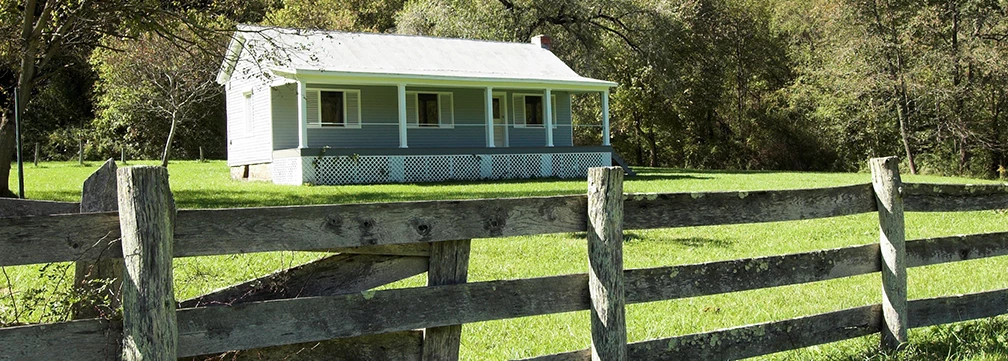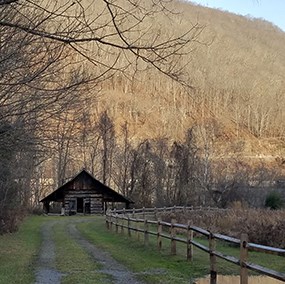
NPS photo Make Do or Do Without

NPS photo, Dave Bieri The basic layout for a subsistence farmstead included the house, usually an original log cabin modified over the years with attached additions and a painted clap-board exterior, numerous outbuildings, barns, sheds, springhouse, and outhouse. Surrounding the farm, the forest was cleared and planted with corn fields, garden plots, and often apple orchards. Barns and other outbuildings provided shelter to the many domestic animals vital to the subsistence lifestyle. A horse or mule was needed to pull the plow and wagons, cows and chickens supplied milk, butter, cheese, and eggs, and beehives provided honey. Hogs, which were allowed to roam semi-wild through the forests, provided a basic source for meat, and the wool from sheep was sheared, spun, and woven for clothing. 
NPS photo Through generations the original lands were broken up and divided amongst married children and their descendants. The last residents of this site were a railroad worker and his family who operated the farm part time to provide a secondary income. The River Road section of the park still consists of many privately owned properties which have evolved from the subsistence farmlands of the original European and African settlers from the early 1800’s. The Richmond Hamilton historic site is located two miles down the ten-mile long River Road, accessible off of Route 20 at Hinton, that dead ends at the Sandstone Falls boardwalk and day use area. River Road and Sandstone Falls covers the upper ten miles of New River Gorge National Park and Preserve and is the longest scenic riverside drive in the park. There are several public picnic, fishing, and river access areas along the way, including the Brooks Falls day use area and Big Branch trailhead. Sandstone Falls marks the dramatic transition for the New Rivers final fifty-mile rush through the New River Gorge to its confluence with the Gauley to form the Kanawha River. Visiting Richmond Hamilton FarmTo get to Richmond Hamilton Farm, exit I-64 at exit 139. Take Route 20 south towards Hinton. Follow Route 20 for 10 miles south to Hinton. After reaching a traffic light, turn right on Route 20 and cross the New River. At the other side of the river turn right onto River Road. Richmond Hamilton Farm is located about two miles down River Road on your left. Watch for a break in a stone wall. There is a parking lot and vault toilet at the entrance. You can walk from there to visit two barns, an outbuilding, and the farmhouse. |
Last updated: August 25, 2023
